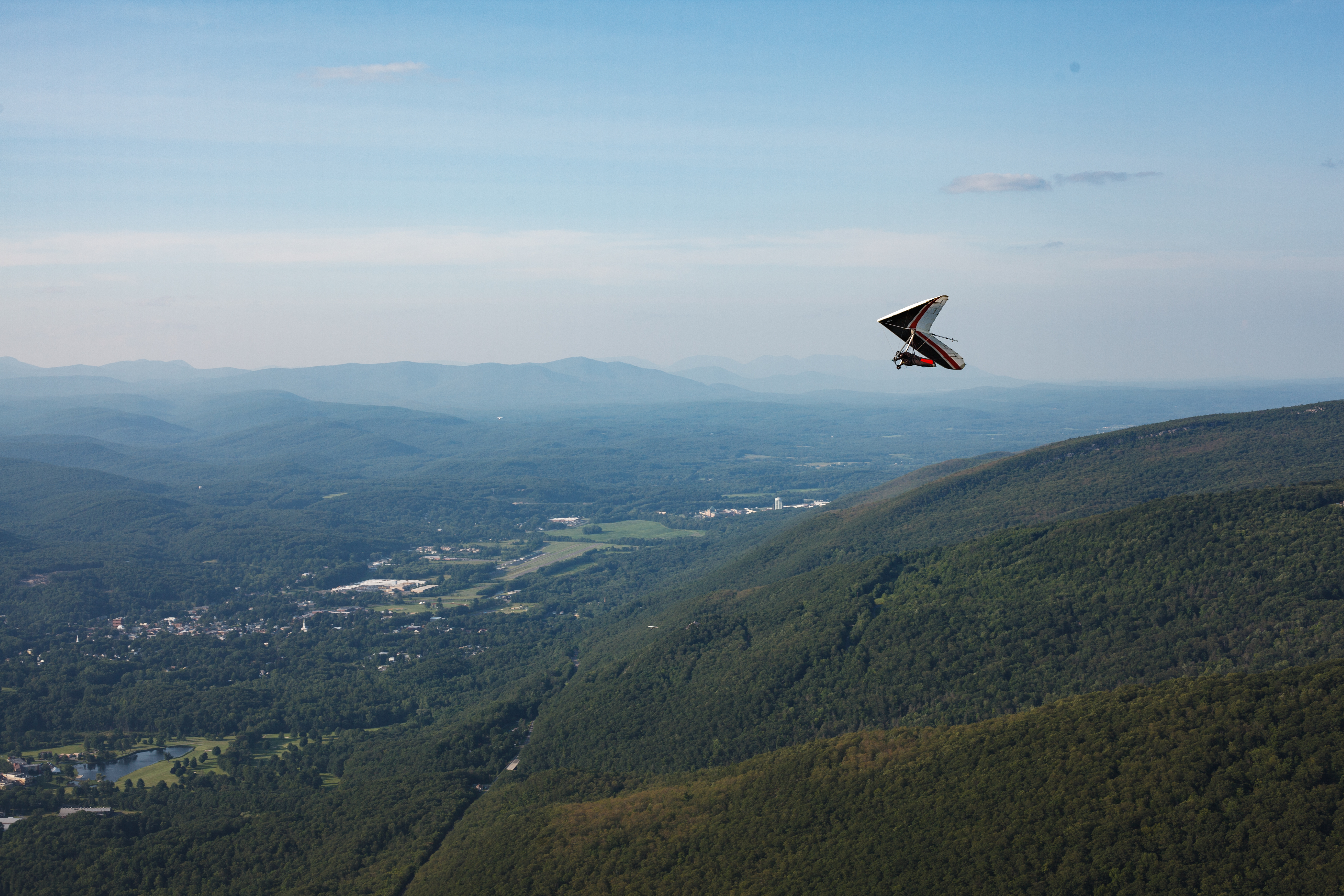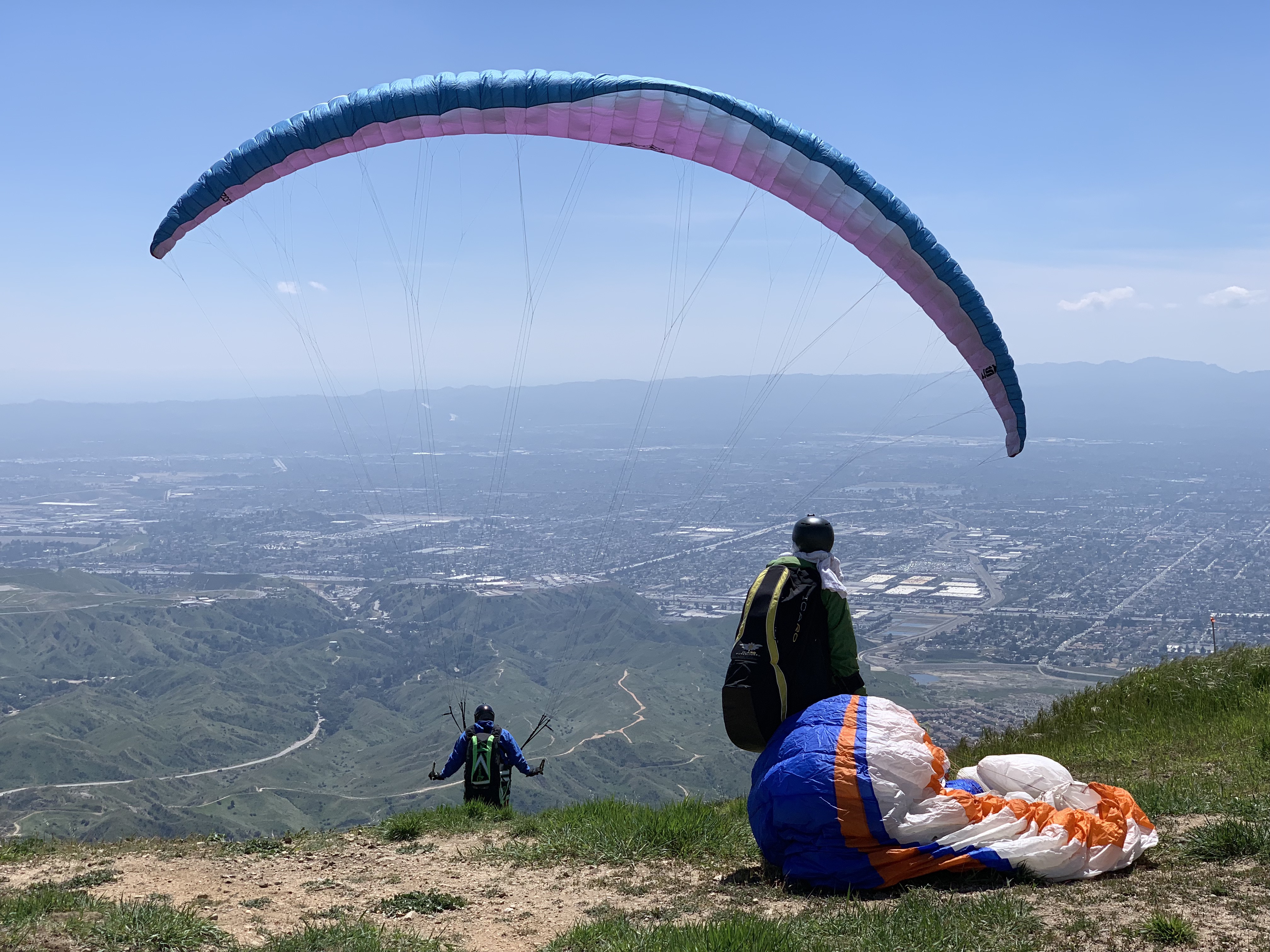By Honza Rejmanek
Originally published in USHPA Pilot, May/June 2019
The long winter has stretched into spring. On a few rare days some of your friends got great flights. But good flying conditions usually occurred during the workweek, when it was impossible to get away. Now, a month past the equinox, it looks as if you will finally get
a great post-frontal day on a Saturday! So you sort out your kit the night before and look forward to the end of a hiatus in thermal flying. However, a part of you feels slightly anxious at the prospect of bouncing around in punchy, springtime thermals. You begin
to wonder if a springtime thermal is really punchy, or if your bump tolerance is just low at this time of year.
 Photo by Ryan Voight
Photo by Ryan VoightCertainly a lack of familiarity can make a strong thermal feel rougher than it might otherwise. However, several factors can lead to surprisingly strong springtime thermals.
It is important to realize that when one considers incoming solar radiation, springtime receives the same amount as summertime, but in reverse order. Spring ends when summer begins, at the summer solstice—when days are longest and the sun carves its highest arc through the sky. In the northern hemisphere, the sun will carve the same arc across the sky in late April as it does in mid-August. Many of the steeper south faces will receive perpendicular rays at high noon, and exposed dry surfaces will heat significantly.
What makes springtime unique in the mid-latitudes is the remaining abundance of cold air in the ice- and snow-covered polar regions. This lag in heating of the polar air assures that frontal systems occur more frequently than during the summer months. Frontal systems, or mid-latitude cyclones, are depicted by a bull’s eye of isobars on a surface chart, centered on a big L. An extra-tropical, or mid-latitude, cyclone can be thought of as a great mixer that helps alleviate the north-south temperature gradient. Polar air is brought towards the equator and subtropical air is brought poleward. In some regions, a steady succession of these cyclones leads to prolonged periods of bad weather. When they are spaced further apart, we need to keep our eye out for the day or two after a cold front has passed. Post-frontal conditions will often bring air that is cool, dry, and possesses a steep lapse rate.
Having freshly arrived from the polar regions, the air is clean of aerosols, or dust and smoke particles. This allows the sun’s rays to reach the ground unhindered. In contrast, the summer months can experience long spells under the influence of high pressure, allowing aerosols to accumulate in the boundary layer. This has a stabilizing effect, because some of the sun’s rays are intercepted thereby heating the air from above. If the visibility is good and the sun feels strong on your face early in the morning, it might be a great flying day. If the dew-point temperature is low, compared to the forecast high temperature, there is a good chance for a high cloudbase. Of course, it is important to make sure it is not going to be too windy for your skill level.
 Photo by Erika Klein
Photo by Erika KleinTo get a strong thermal, we need a fast heating rate of the air near the surface, as well as a deep layer with a steep lapse rate, through which the thermal can accelerate and get up to speed. Spring will generally bring fewer flyable days than summer, but when a flyable day sets up, it often allows for great flights and a deep boundary layer. A light-wind day, after the passage of a cold front, can yield a day with a long flying window and high cloudbases and spectacular views. If the higher mountains are still snow-covered, there will be fewer thermals to draw in a strong valley wind than on a summer day. Thus, crossing of large valleys can be easier in the spring than in the summer. This is why some very long XC flights can be flown in the spring.
Strong heating rates occur when there is a strong temperature contrast between the surface and the air overlying the surface. Drier surfaces are more likely to develop this surface-to-air temperature contrast. Wet or vegetated surfaces do not heat very efficiently, because much of the net radiation is spent on evaporating water. In springtime, many deciduous trees are just starting to sprout their leaves, while those on higher slopes are still in winter mode. More of the sun’s energy can go into heating the surface, without the presence of a dense leaf cover.
It is important to remember that a surface can lose heat by conduction, convection, and radiation. In the summer, it can be more difficult to maintain a strong temperature contrast between the surface and the overlying warm air. A surface radiates in the long wave. As the surface gets hotter, it loses a greater percentage of its heat to space by long-wave radiation. Less energy is available for heating the air.
In springtime, it is not uncommon for cold air to continue to blow in aloft, while the surface air heats from below. This destabilizing scenario is conducive to thermal production.
In sum, the factors discussed can conspire on a clear, crisp spring day to produce surprisingly strong thermals that are easily as strong as in those in the summer. If you have a personal rule of not flying mid-day thermals in the summer, you will be wise to adhere to this rule in the spring. This would be particularly prudent if you have not flown in thermals all winter.